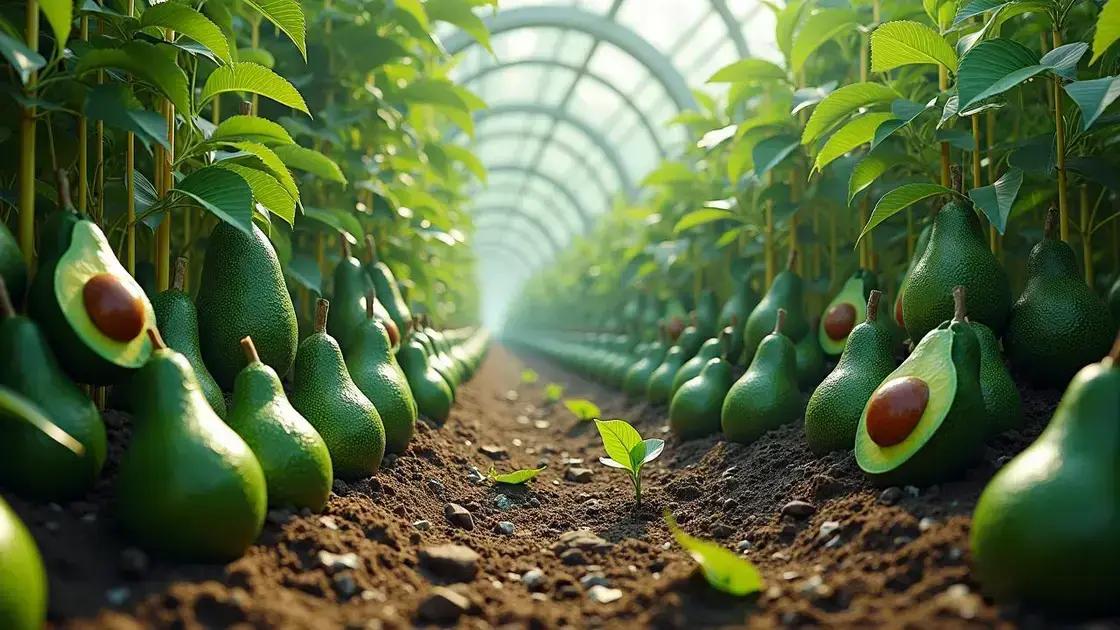How to Take Care of an Avocado Plant: 5 Essential Tips You Need
How to take care of an avocado plant can feel daunting, but it doesn’t have to be! With a few key tips, you can nurture your plant to health and productivity. Understanding its needs is crucial—from watering to sunlight. Let’s explore how to create the perfect environment for your avocado.
Table of Contents
ToggleEssential watering schedule for avocado plants
How to take care of an avocado plant includes understanding its watering requirements to ensure optimal growth. Avocado plants thrive best with a consistent watering schedule that balances moisture without creating soggy conditions.
Watering frequency and technique
Establishing an effective watering routine involves knowing when and how much to water. Here are practical steps to follow:
- Water your avocado plant every 1-2 weeks.
- Check the soil moisture by sticking your finger about an inch into the soil; if it feels dry, it’s time to water.
- Water thoroughly until excess moisture drains from the bottom of the pot, ensuring roots receive full hydration.
- Reduce watering frequency during the winter months when the plant is dormant.
Signs of overwatering and underwatering
Monitoring your plant’s health provides clues about its watering needs. Look out for the following:
- Overwatering signs: Yellowing leaves, root rot, and mold forming on the soil surface.
- Underwatering signs: Drooping leaves, browning edges, and stunted growth.
Best practices for watering
Here are some tips for maintaining the best watering practices for your avocado plant:
- Use well-draining soil to prevent water retention.
- Water in the morning to allow foliage to dry during the day, reducing the risk of fungal infection.
- Consider using a moisture meter for more accurate readings.
To dive deeper into caring for indoor plants, consider exploring indoor gardening techniques that enhance your plant care knowledge.
Conclusion
Following these watering guidelines ensures your avocado plant remains healthy and productive, leading to those delicious fruits we all love.
Soil requirements that boost avocado growth

Soil requirements that boost avocado growth are crucial for cultivating a thriving plant. The right soil composition plays a significant role in ensuring your avocado plant receives essential nutrients and maintains proper moisture levels.
Ideal soil composition
Avocado plants prefer well-draining soil rich in organic matter. Here are the key components to consider:
- Soil type: A sandy loam or loamy mix works best.
- Organic matter: Compost or peat moss should make up 30-40% of the mix.
- pH level: Aim for a slightly acidic to neutral pH range of 6.0 to 7.0.
Mixing your own soil
If you’re interested in creating your own soil mix, follow these simple steps:
- Combine equal parts of potting soil and perlite for good drainage.
- Add a third of organic compost to enrich nutrient content.
- Incorporate a small amount of sand to enhance drainage.
Benefits of the right soil
Using soil that meets the specific requirements for avocados enhances growth in several ways:
- Improves drainage, preventing root rot.
- Provides essential nutrients for robust growth.
- Retains moisture without becoming waterlogged.
For more insights and resources on effective plant care, consider exploring indoor gardening techniques that can help you nurture your plants better.
Common soil-related issues
Understanding potential problems will help you maintain optimal soil conditions:
- Compacted soil: Leads to poor drainage and root suffocation.
- Overly acidic or alkaline soil: Can inhibit nutrient uptake.
Addressing these issues promptly can keep your avocado plant healthy and productive.
Optimal sunlight exposure for thriving avocado plants
Optimal sunlight exposure for thriving avocado plants is essential for their growth and fruit production. Understanding how much sunlight your plant needs can greatly impact its overall health.
Sunlight requirements for avocado plants
Avocado plants thrive best when they receive adequate sunlight. Here are key points to consider:
- Avocado plants need at least 6 hours of direct sunlight daily.
- Morning sunlight is ideal, as it helps plants photosynthesize effectively.
- Indirect light can also benefit young plants, protecting them from harsh afternoon rays.
Identifying the right location
Choosing the right spot for your avocado plant is crucial. Consider the following:
- Place your avocado tree near south or west-facing windows for maximum sunlight.
- Avoid dark corners, as low light can stunt growth and lead to weak branches.
- If using grow lights, ensure they are on for about 12-14 hours daily for similar effects to natural sunlight.
Effects of too much or too little sunlight
Monitoring your avocado plant for signs of sunlight stress can help you adjust accordingly:
- Too much sunlight: Leaves may become scorched or crispy.
- Too little sunlight: Growth may slow down, and leaves could yellow.
For more strategies on indoor plant care, consider exploring indoor gardening techniques to keep your plants healthy.
Adjusting light exposure with the seasons
As seasons change, adjusting your avocado plant’s light exposure may be necessary:
- During winter, you might need to move your plant closer to a light source.
- In summer, providing some shade in the hottest part of the day can prevent scorching.
By maintaining optimal sunlight exposure, your avocado plant can thrive beautifully and produce fruitful yields.
In conclusion
Caring for an avocado plant requires attention to several key factors that directly impact its growth and productivity. By ensuring you follow a proper watering schedule, maintain appropriate soil conditions, and provide optimal sunlight exposure, you’ll create a healthy environment for your plant to thrive. Remember, the right care not only supports your plant’s health but also enhances your indoor gardening experience. For more tips on enhancing your indoor garden, explore reliable resources that can offer additional insights.

